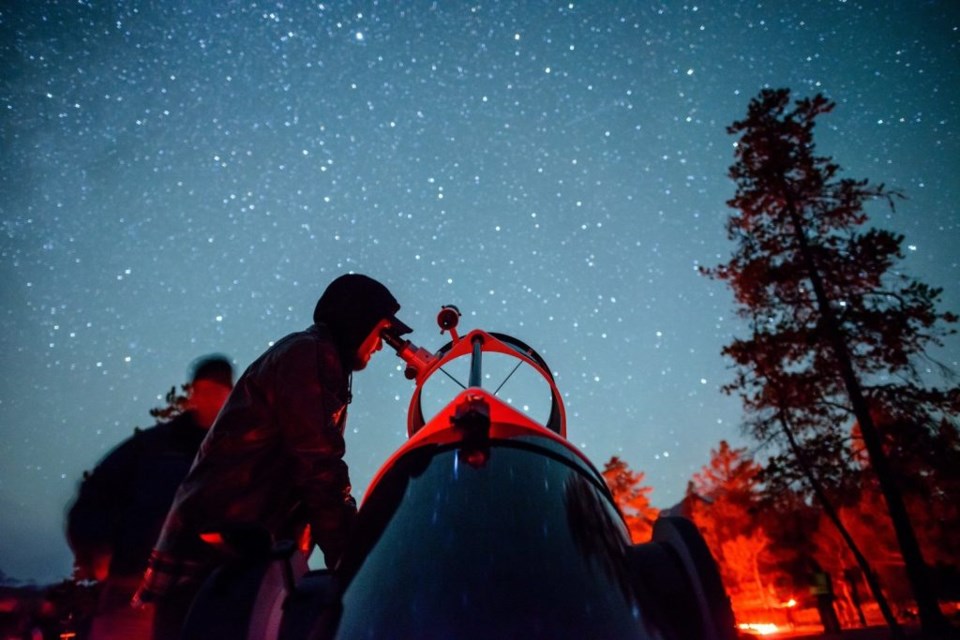JASPER – Since starting in 2011, the Jasper Dark Sky Festival has steadily grown in popularity and become a signature event for Jasper National Park.
But can other rural communities break into dark sky tourism?
the history and successes of the festival and identifies lessons that could help other communities pursue this novel form of tourism.
“There’s a lot of potential for dark sky tourism, and especially in areas that need it,” said Glen Hvenegaard, one of the study’s authors and professor of environmental science at the University of Alberta Augustana Campus.
Dark sky tourism, a subset of ecotourism, is focused on experiencing the night sky in areas with minimal light pollution and allowing visitors to appreciate natural phenomena such as auroras and eclipses.
“Many of these areas where there’s potential for dark sky tourism are places that are remote and with less light pollution, and these places often are in rural areas that are suffering from all kinds of global and local changes that are affecting their viability,” Hvenegaard said.
Hosted by Tourism Jasper, the Jasper Dark Sky Festival runs for over two weeks in October and aims to draw visitors to Jasper during the fall shoulder season.
Activities include stargazing, guest speakers, night hikes, Indigenous cultural awareness events, indoor planetarium tours, fireside storytelling, musical performances, drone shows and more.
Hvenegaard and his colleague Clark Banack gathered data by attending the festival themselves in 2022 and 2023, conducting interviews with insiders and searching for festival activities mentioned in online sources.
In 2011, Jasper was designated as a Dark Sky Preserve by the Royal Astronomical Society in Canada, due to its limited light pollution that creates ideal conditions for dark sky viewing.
This designation was identified as one of the factors that help explain the festival’s success, along with developing a balance between traditional educational programming and “info-tainment”.
“There’s always a little bit of a balance or tension between promoting speakers and information around dark sky, celestial issues, astronomy versus space-adjacent kinds of topics like extraterrestrials or space travel,” Hvenegaard said.
The study noted the festival began small, allowing “a key local foundation” to be built. Tourism Jasper later promoted its growth by inviting notable speakers such as retired astronaut Chris Hadfield before recognizing the need to make the festival more financially sustainable.
“They’ve gone through some ebbs and flows in terms of how much to invest,” Hvenegaard said. “They used to have a big 1,000-person tent where they brought in really big-name science speakers, space speakers, but that’s been a lesson where they can use existing facilities in the community and not as many top-tier speakers, for example.”
In addition, it was important to have community “buy-in” and local champions who are passionate about the event and trusted within the community.
Although the study was conducted prior to the Jasper wildfire, it acknowledged that the disaster would undoubtedly affect the future of the festival and had already caused last year’s festival to be scaled down.
A more perennial challenge with the festival is the uncertain weather, which may necessitate some indoor programming.
“The month of October, generally, is pretty good, but they’ve had times where the festival had temperatures dropping down to minus teens and 20s, but most often it’s reasonable,” Hvenegaard said.
While Jasper already has plenty of tourism infrastructure in place, including an observatory at the Jasper Park Lodge, other rural communities can leverage their strengths, whether that is being located in a prairie environment or having Indigenous history that can be highlighted.
“Every place, I think, should try to copy success stories, but they should try to develop what’s intrinsically interesting and be really authentic to the local place and local people,” Hvenegaard said.
Tourism Jasper CEO Tyler Riopel noted the study reinforced the notion that the use of events and the natural environment was an effective way to promote tourism and education.
“What may have started as an education opportunity has turned into an opportunity not just to educate but also to entertain, and that’s pretty much the natural evolution of events, and that seems to be what the study showed as well,” Riopel said.
He attributed the growing popularity of the festival to an increased interest in dark skies and STEM and Jasper’s ability to tap into this niche market.
Riopel also agreed that the festival should focus on educating the public while also attracting tourists.
“A big takeaway that I got from this specific study was the idea that we have to ensure that we continue to be aligned with the notions of environmental stewardship, in this case, dark sky stewardship,” he said.
As for how other communities could pursue dark sky tourism, Riopel noted the importance of setting the goals and intents of a festival around dark skies and focusing on a niche market. He also entertained the idea of Jasper being the headliner of a dark sky festival season.
Although last year’s festival was a smaller affair, Tourism Jasper is anticipating that the festival will make a proper comeback for its 15th anniversary.
“We think it’d be a wonderful way to have that full festival again because we do feel that we missed the ability to have that full festival this past October,” Riopel said. “Everybody is in alignment, and we’re already hard at work planning and absolutely looking forward to it.”




